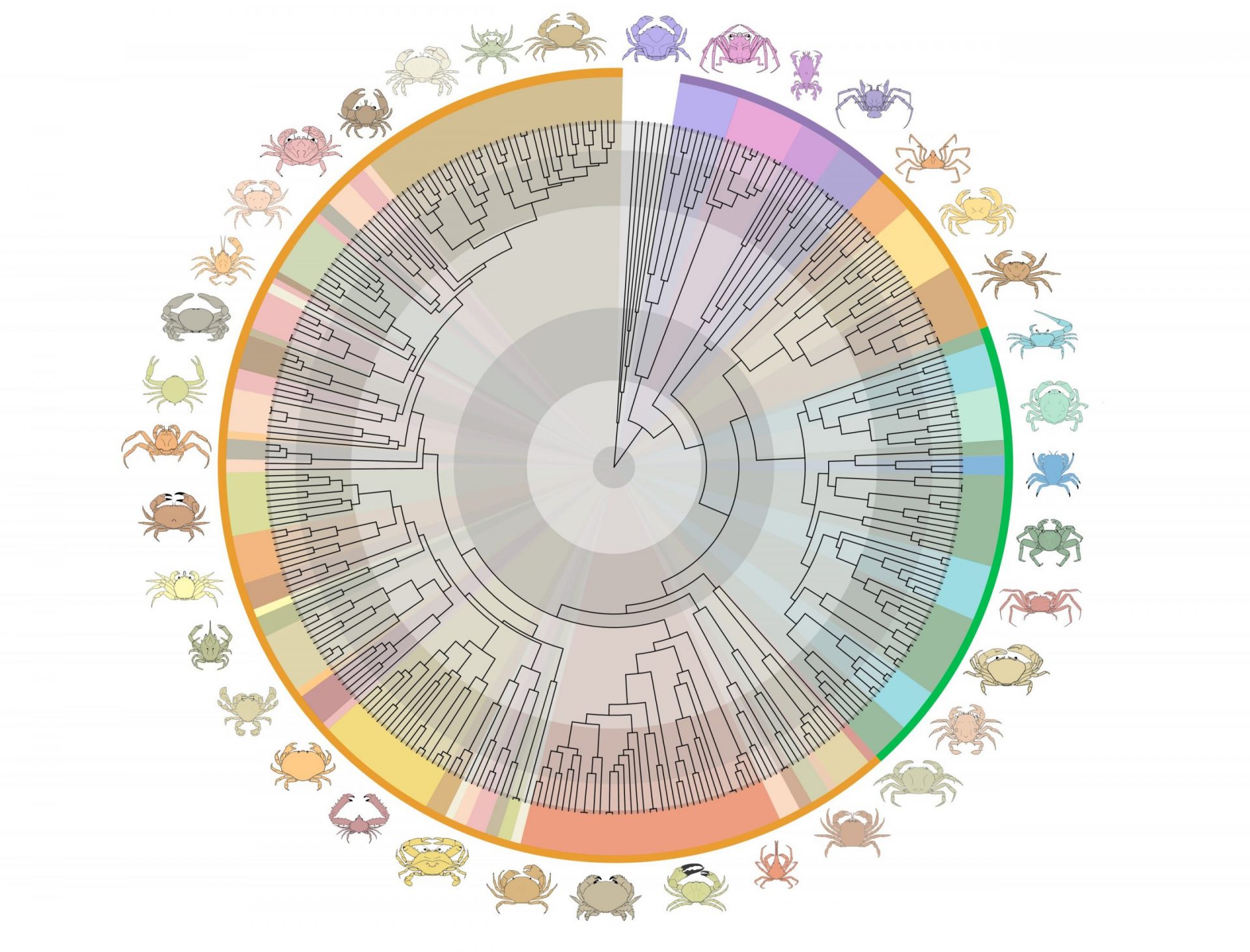Crabs are fascinating creatures that have continuously adapted and evolved throughout history. They have the ability to transition from marine environments to other habitats, showcasing their unique versatility. Some popular crab species can be found in fully marine environments, while others thrive in estuarine areas.
In a groundbreaking study published in Systematic Biology, a team of international researchers, led by Joanna Wolfe from Harvard University, explored the history of true crabs (Brachyura) and their transitions from marine to non-marine environments. This extensive project, spanning nearly two decades, revealed that true crabs have left the marine environment not just once or twice, but a remarkable 7 to 17 times. Furthermore, the study discovered that true crabs are much older than previously believed, dating back to the Middle Triassic period, which is 45 million years earlier than the assumed Jurassic period.
True crabs encompass over 7,600 species in 109 families. Throughout millions of years, some crab species have successfully adapted to various environments, including intertidal zones, terrestrial habitats, and freshwater ecosystems. Unlike most arthropods, which made the transition from oceans to land only once or a few times, true crabs have independently populated land and freshwater around 17 times in the last 100 million years.
The researchers compiled three comprehensive datasets to analyze true crabs. They constructed a molecular phylogeny of 344 species from 88 true crab families, incorporating both marine and non-marine groups. They also utilized fossil calibrations, consisting of 36 carefully vetted calibrations and the entire documented crab fossil record. Additionally, they gathered natural history data to classify each crab species based on their habitat, larval development, respiratory morphology, setae types, burrowing behavior, and diurnal/nocturnal activity.
By reconstructing the phylogenetic relationships and employing Bayesian methods, the researchers were able to determine the timing of evolution and estimate the number of ecological transitions from marine to non-marine environments. The study identified two pathways to terrestrialization: one involving a direct transition from fully marine to land through intertidal zones, beaches, coastal forests, and jungles, and the other involving an indirect transition through estuarine, submerged freshwater, riverbanks, and finally coastal forests and jungles.
The researchers observed numerous instances of convergent evolution during terrestrialization, where certain sets of traits emerged independently in different crab lineages. This finding provides valuable insights into predicting evolutionary patterns in other organisms. Understanding how different organisms adapt to new environments is crucial for biologists seeking to predict the evolution of phenotypes and morphologies within a group.
Crabs offer a unique perspective on the early stages of adaptation to new environments and the varying degrees of evolutionary constraints. This study sheds light on convergent evolution and the remarkable ability of organisms to adapt from aquatic to terrestrial life. It also highlights the ongoing process of evolution and the ever-changing niches occupied by organisms.
Surprisingly, the researchers also discovered evidence of crabs returning to fully marine life at least 2 to 3 times. This suggests that while crabs are capable of transitioning to land, it is much more challenging for them to become fully independent from water. Evolution is a continuous process, and organisms must constantly adapt to their changing environments. There is no perfect adaptation that can persist indefinitely.
The study’s findings not only expand our knowledge of crab evolution but also provide valuable insights into the broader field of evolutionary biology. Crabs continue to captivate scientists, and studies like this allow us to unravel the mysteries of their habitat transitions and the timing of these significant events. As Assistant Professor Heather D. Bracken-Grissom from Florida International University states, “Crabs never cease to amaze us, and research like this helps us gain a deeper understanding of their remarkable adaptations.”








